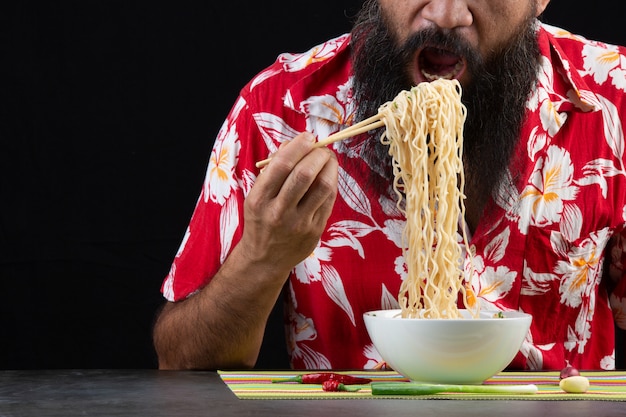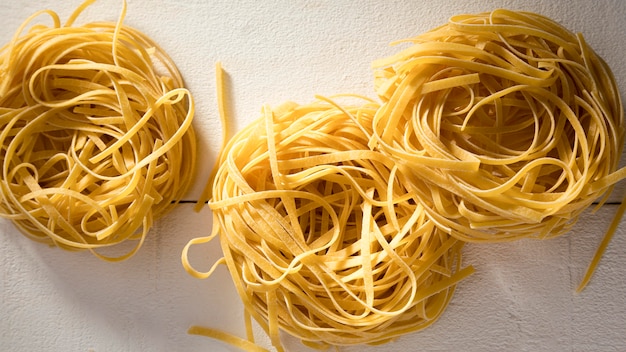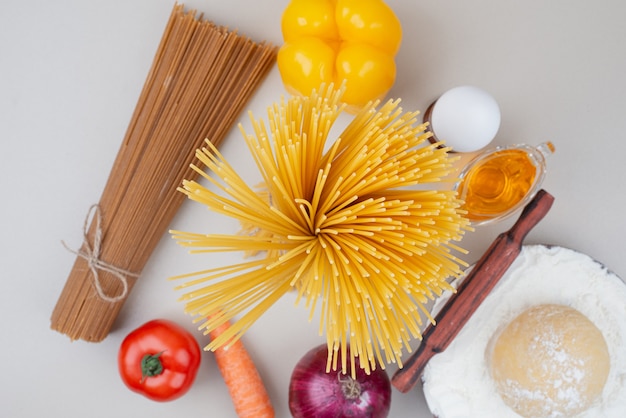I've been a pasta enthusiast for as long as I can remember. There’s nothing quite like the comforting aroma of spaghetti simmering on the stove, the anticipation building as you wait for that perfect bite. But over the years, I’ve also learned that a pot of overcooked spaghetti can be a culinary nightmare. That mushy, gluey texture is a real mood killer, turning a simple dish into something less than delightful. On the other hand, perfectly cooked al dente spaghetti is a joy to behold. It’s firm, it’s springy, it’s practically dancing on your fork, ready to be tossed with your favourite sauce.
The quest for the perfect spaghetti is a journey, and it all starts with understanding how long to cook it. It’s not as straightforward as you might think, because there are a few key factors to consider – the type of pasta, the size of the pot, even the altitude you’re cooking at. But fear not, fellow pasta lovers! I'm here to guide you through it, sharing my tried-and-true tips to ensure you achieve that perfect bite every single time.
Part 1: The Foundations of Perfect Spaghetti

Before we dive into the specifics of cooking time, let's lay the groundwork for success. You'll need a few essential ingredients and a good understanding of the process.
1. The Pot: Your Culinary Canvas
Don't underestimate the importance of your pot. It’s not just a container; it’s your culinary canvas. A large pot – at least 6 litres – is essential for spaghetti to cook evenly. Imagine your pasta swimming in a pool – it needs plenty of room to move around freely, without being overcrowded. You want enough water so that the spaghetti is submerged and can move around easily.
2. Water: The Lifeblood of Pasta
Water is the lifeblood of pasta. You need a generous amount – about 8 to 10 cups – to ensure the water doesn't cool down too much when you add the pasta. Think of it like a bath for your spaghetti. You want it to be comfortable and warm, not a chilly plunge.
3. Salt: The Unsung Hero
Salt is often overlooked, but it's an essential ingredient in pasta cooking. It doesn’t just add flavour; it actually helps the pasta cook more evenly. I always add about 1 tablespoon of salt per litre of water. It’s a good starting point, but feel free to adjust based on your taste. But remember, a little salt goes a long way!
4. Boiling Water: The Key to Success
Once your pot is filled with water and seasoned with salt, bring it to a rolling boil. You want to see those vigorous bubbles, those little whirlpools on the surface. That’s the magic happening that will transform your raw spaghetti into a culinary delight.
5. The Pasta Plunge: A Gentle Introduction
The moment of truth has arrived. Gently drop the spaghetti into the boiling water, making sure it's fully submerged. Stir it gently to prevent it from sticking together and to ensure that every strand is exposed to the heat.
Part 2: Decoding Cooking Time: It’s Not Just a Number

Now we come to the heart of the matter: cooking time. It’s not just a number on a package; it’s a science. A delicate dance between heat, water, and the type of pasta you’re using. Here’s how to master it:
1. The Package: A Starting Point, Not the End
Always check the package instructions. It’s a good starting point, but keep in mind that those instructions are just a guideline. They can vary depending on the brand, the type of pasta, and even the thickness of the strands.
2. Al Dente: The Perfect Bite
Al dente is the holy grail of pasta cooking. It means "to the tooth," meaning the pasta should be cooked through but still have a slight bite to it. It should be firm, with a little spring, not soft and mushy. You can check for doneness by taking a strand of spaghetti and biting into it. It should have a slight resistance, like a firm handshake.
3. Adjusting to Your Taste: Embrace Your Personal Preference
The magic of cooking is that it’s personal. If you prefer your spaghetti softer, cook it for a little longer. But be careful not to overcook it, or you’ll end up with a mushy mess. I find it helpful to check the pasta a minute or two before the package instructions suggest, giving me a chance to adjust the cooking time based on my preference.
Part 3: The Little Things That Make a Big Difference

We've covered the fundamentals, but there are a few additional tips and tricks that can take your spaghetti cooking from good to great:
1. Don't Overcrowd the Pot: Give Your Pasta Space
Adding too much pasta to the pot is a recipe for disaster. It can lead to uneven cooking and a mushy texture. Make sure you leave enough space for the pasta to move freely in the water. If you're cooking a large amount of spaghetti, consider cooking it in batches.
2. Stirring is Your Friend: Keep It Moving
Stir the pasta occasionally to prevent it from sticking together. This also helps the water circulate and ensure that all the strands are cooked evenly.
3. pasta water: A Culinary Treasure
Don't throw away the pasta water! It’s full of starch, which can be used to thicken sauces and add a velvety texture. Save about a cup of it and set it aside to use later. It’s a secret ingredient that can elevate your pasta dishes to a whole new level.
Part 4: Beyond Spaghetti: A World of pasta shapes
Spaghetti is the classic, but there’s a whole world of pasta shapes out there, each with its own unique texture and cooking time. Here are a few popular options:
1. Spaghetti: The Timeless Classic
This long, thin noodle usually takes about 8-10 minutes to cook. You know it's ready when it's al dente – firm with a slight resistance.
2. Penne: The Perfect Tube
Penne, with its iconic cylindrical shape, often takes about 10-12 minutes. It's a bit thicker than spaghetti, so it requires a little extra cooking time.
3. Rigatoni: A Culinary Workhorse
Similar to penne, rigatoni has a thick cylindrical shape and takes about 10-12 minutes. This makes it ideal for holding onto sauce and adding extra texture to your meal.
4. Fettuccine: The Flat Ribbon
Fettuccine, with its flat, wide ribbons, typically takes about 8-10 minutes. It's a wonderful canvas for creamy sauces and light, fresh toppings.
5. Linguine: The Slender Ribbon
Linguine, similar to fettuccine but a little thinner, also takes about 8-10 minutes. Its long, flat shape is perfect for twirling and enjoying with light sauces.
Part 5: Different Pasta Types: Dried, Fresh, and Filled
Let's expand our understanding of pasta types beyond shapes:
1. dried pasta: The Pantry Staple
Most dried pasta shapes cook in about 8-12 minutes, depending on the shape and thickness.
2. fresh pasta: A Culinary Treat
Fresh pasta, made with eggs, cooks much faster than dried pasta, usually in about 2-3 minutes. It’s often made at home or purchased at specialty stores.
3. Filled Pasta: A Delicate Dance
Filled pasta, like ravioli or tortellini, often has slightly longer cooking times than other pasta shapes. It usually takes about 10-15 minutes. Be careful not to overcook it, as the filling can become watery and lose its flavour.
Part 6: Avoiding Common Mistakes: Don’t Let Your Pasta Be a Casualty
We’ve all been there – that moment when we realize we’ve overcooked our pasta, or it’s stuck together into a sticky mess. Here are some common mistakes to avoid:
1. Overcrowding the Pot: Give Your Pasta Room to Breathe
Adding too much pasta to the pot can lead to uneven cooking and a mushy texture. Make sure you leave enough space for the pasta to move freely in the water.
2. Not Stirring Enough: Keep It Moving
Stirring the pasta occasionally prevents it from sticking together and ensures that all the strands are submerged in the water and cook evenly.
3. Undercooking: Avoid That Crunchy Texture
Undercooked pasta can be crunchy and tough. Check the pasta a minute or two before the package instructions suggest and try a strand to see if it's cooked to your liking.
4. Overcooking: Don’t Let Your Pasta Turn to Mush
Overcooking pasta is a common mistake. It can make it mushy and unappetizing. It's better to cook it slightly al dente and then toss it with your sauce.
Part 7: Tips for Beginners: Embrace the Journey
If you're new to cooking pasta, don't be intimidated. It’s a simple and rewarding skill. Here are a few tips to help you along the way:
1. Embrace Experimentation: Explore Different Shapes and Flavours
Don't be afraid to experiment with different shapes and textures. Explore the world of pasta beyond spaghetti! Try penne, rigatoni, fettuccine, or linguine. There’s a whole world of deliciousness waiting to be discovered!
2. The Salt Is Your Friend: Don’t Be Shy
Salt is essential for pasta cooking. It flavours the water and helps the pasta cook evenly. Don't be shy! Use a good amount of salt.
3. Taste Testing: The Ultimate Test of Doneness
The best way to determine if your pasta is cooked to your liking is to taste test it. Try a strand and see if it's al dente.
4. Don’t Be Afraid to Ask for Help: We’re All in This Together
If you're having trouble, don't be afraid to ask for help. There are plenty of resources available online, and your local supermarket or grocery store often has employees who can offer advice.
Part 8: FAQs: Common Questions Answered
Now let’s address some frequently asked questions about cooking spaghetti:
1. Can I Cook Pasta in a Microwave?
While it’s possible to cook pasta in a microwave, it’s not recommended. The results can be uneven and the pasta may not be cooked through properly. For best results, stick to traditional stovetop cooking.
2. What Should I Do if My Pasta is Overcooked?
If you've accidentally overcooked your pasta, don't worry! There are a few things you can try. One is to toss it with a sauce that has a lot of liquid, like a creamy sauce, which can help to absorb some of the excess moisture. Another option is to use the overcooked pasta in another dish, like a pasta salad.
3. Can I Add Oil to the Pasta Water?
Adding oil to the pasta water is a common myth. It won’t prevent the pasta from sticking together, and it can actually make it harder for the sauce to cling to the pasta. Stick to using plenty of water and stirring the pasta regularly.
4. How Can I Make My pasta sauce Stick to the Spaghetti?
There are a few things you can do to make your sauce cling to the spaghetti better. One is to add a little bit of pasta water to the sauce. The starch in the pasta water will help to thicken the sauce and make it cling to the pasta better. Another trick is to toss the pasta with the sauce in the pot you cooked it in. This will help the sauce coat the pasta evenly and create a delicious, creamy sauce.
5. What Should I Serve with Spaghetti?
Spaghetti is a versatile dish that can be paired with a wide variety of sauces and toppings. Some classic options include marinara sauce, meat sauce, alfredo sauce, and pesto. You can also add toppings like grated cheese, chopped fresh herbs, or roasted vegetables. Let your imagination run wild!
Part 9: Embrace the Journey: From Beginner to Pasta Pro
Cooking the perfect spaghetti might seem like a simple task, but it’s a skill that takes practice and a little bit of patience. But with these tips and tricks, you'll be on your way to making delicious and perfectly cooked spaghetti every single time. Remember, the key is to cook it al dente and enjoy the process!
So grab a pot, fill it with water, and get ready to cook some delicious pasta!
I hope this comprehensive guide helps you on your pasta cooking journey. Whether you're a seasoned chef or a beginner, remember, the most important ingredient is a passion for delicious food and the willingness to experiment. So, don't be afraid to step into the kitchen and let your culinary creativity shine!
Everyone is watching

Corn on the Cob: The Ultimate Guide to Perfectly Cooked Ears
Healthy MealsAh, corn on the cob. Just the name evokes images of sunny days, barbecues, and that sweet, juicy flavour that ...

Perfect Pork Roast Oven Cooking Time: A Guide to Delicious Results
Healthy MealsThere's something truly satisfying about a perfectly roasted pork. The aroma alone is enough to make your mout...

Ham Cooking Time: How Long to Bake, Smoke, or Boil a Delicious Ham
Healthy MealsAh, ham. It's a classic, isn't it? A real crowd-pleaser, especially around holidays. And when done right, it'...

Scallops: The Ultimate Guide to Perfect Cooking
Healthy MealsAh, scallops. Those delicate, sweet, and utterly delicious morsels of the sea. They hold a special place in my...

Spaghetti Squash: The Ultimate Guide to Cooking and Serving
Healthy MealsRemember that time you saw spaghetti squash at the supermarket, looking all bumpy and strange, and thought, "W...
